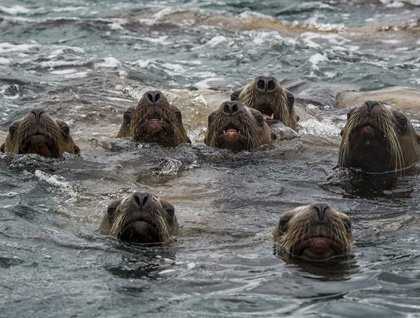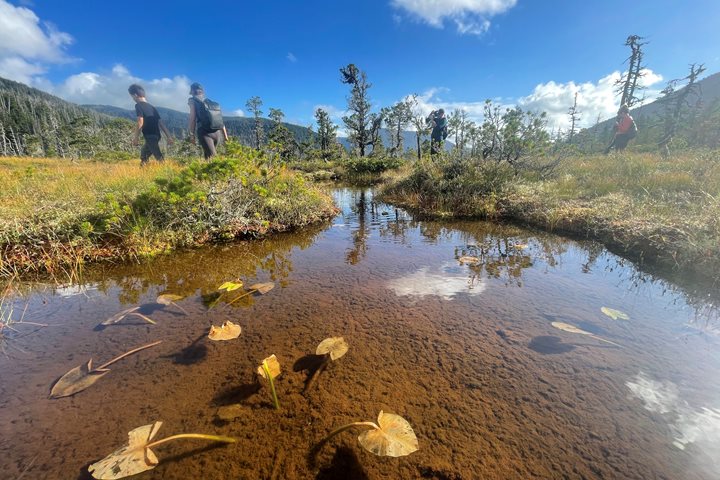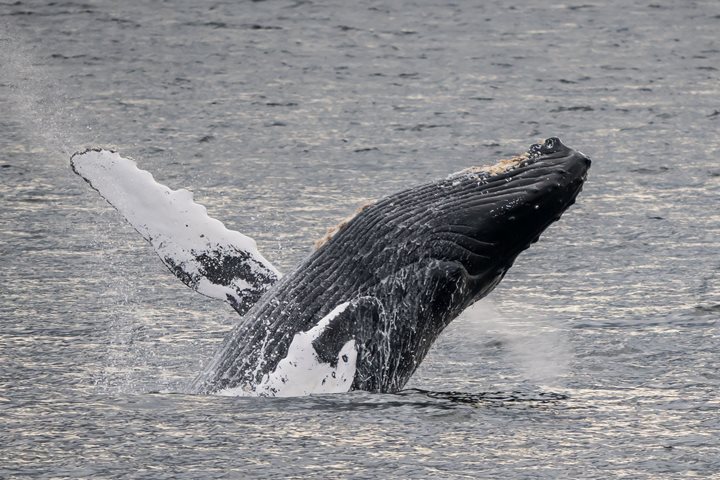The swirling, incoming tide bathes the rocky Inian Islands with nutrient-rich water from the Gulf of Alaska. Accompanying this cold water is an assortment of migrating fish, most notably five different species of salmon. How do we know this? Because there is an assortment of predators waiting for these silvery protein packets to flow through the narrow bottlenecks of the Inian Islands. Scanning the smooth water, countless heads and random flippers can be seen breaking the surface all around us. We see the occasional chaotic flurry of action and then half of a fish goes flying. Steller's sea lions are formidable predators and use all their maneuverability and experience to capture as many silver and pink salmon as possible before the straits become wide once again and the salmon can disappear into the safety of the large basin to the east.
Taking to the kayaks and exploring by foot, we saw another side of Cross Sound from the shores of George Island. Although some distance from the bottleneck, George Island is still in the thick of things. From the kayaks we watched both tufted and horned puffins bob on the low ocean swell and explored the kelp forests with quiet strokes of our paddles. Sea otters popped up for an inquisitive look before plunging back to the depths. We also learned about Southeast Alaska’s role during World War II as this was the site of a large gun emplacement which was meant to protect Cross Sound from warships entering the Inside Passage. It seems so odd to have a huge, rusting gun overlooking otters in the kelp below. The gun is a symbol of death and destruction and industrialization. The sea otter, once hunted to the edge of extinction, now a conservation success story. With time, the sea will claim the remains of war and leave the cliffside wild again. The only blemishes are those carved by wind and wave, not man.







